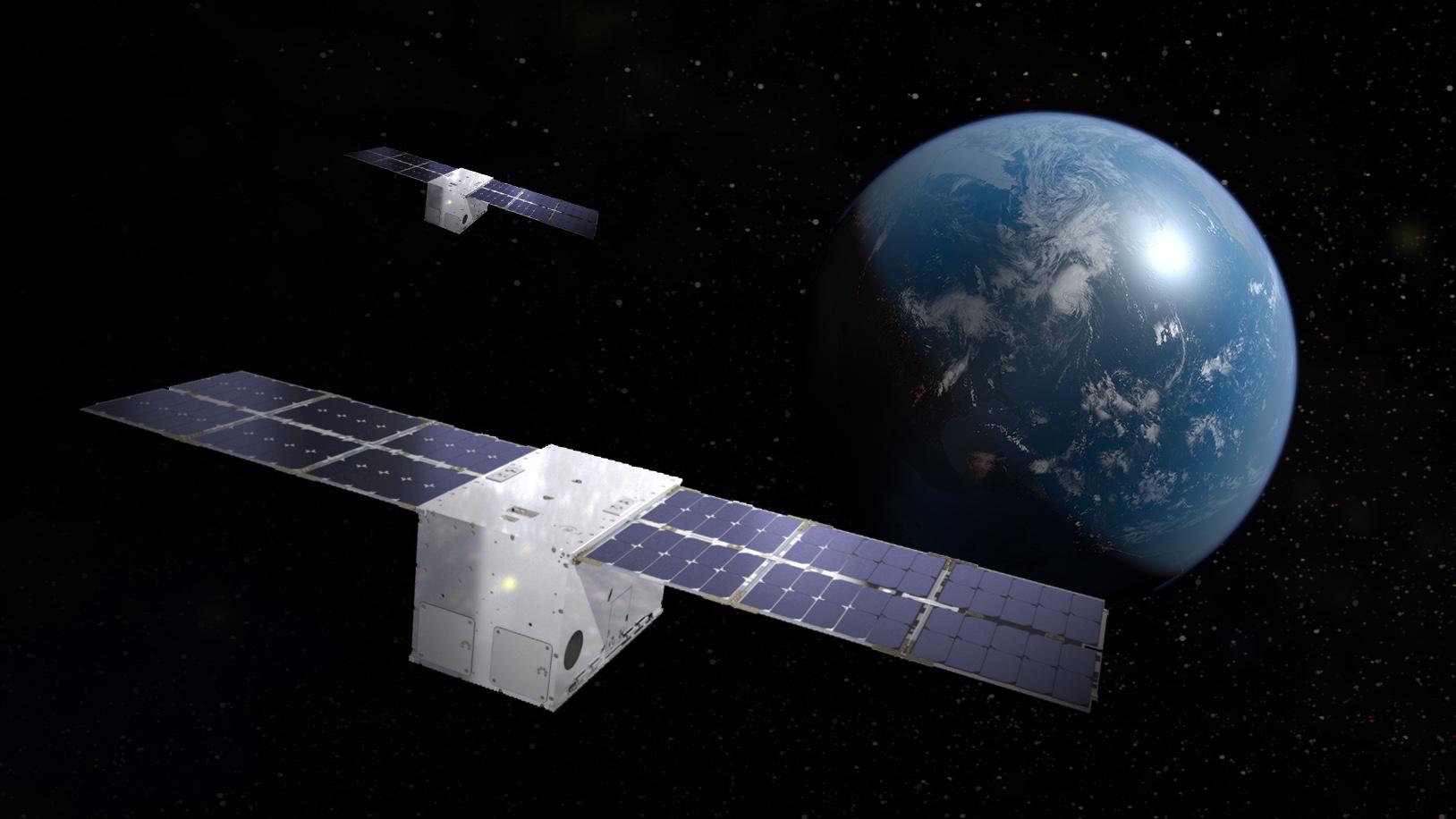
LINUSS is intended to validate guidance algorithms needed for in-space servicing spacecraft.
COLORADO SPRINGS–Lockheed Martin’s In-space Upgrade Satellite System CubeSats demonstrated rendezvous and proximity operations within 400 m in February.
The two, identical satellites–one designated as a servicing vehicle and the other acting as a client satellite–are intended to test technologies needed for future in-space servicing spacecraft, said Karla Brown, program manager for Lockheed Martin’s In-space Upgrade Satellite System (Linuss), at the Space Symposium here on April 17.
“The closest proximity that we have images of was 400 m,” she said. “We know we have gotten closer.”
The pair of Linuss satellites were launched in November as a secondary payload aboard the USSF-44 mission. As part of the geostationary orbit demonstration, which began in early 2023, the two satellites started out about 750 km apart and then over the course of less than two months maneuvered closer to one another.
Lockheed Martin is continuing the Linuss mission and plans to attempt closer rendezvous and proximity operations, Brown said. It also plans to upload software to the satellites to refine the vehicles’ performance and demonstration addition capabilities, she said.
The satellites are part of Lockheed Martin’s LM 50 family of cubesats, which are based on a 12U bus from Terran Orbital. In October, Lockheed Martin made a $100 million strategic investment into small satellite manufacturer Terran Orbital to boost its manufacturing capacity.
The Linuss satellite demonstration is funded via Lockheed Martin’s internal funds. It is focused on validating onboard guidance algorithms for future space upgrade and servicing missions, Brown says. Lockheed Martin also intends to validate new onboard high-performance processing, low-toxicity propulsion, inertial measurement units, machine vision and 3D-printed components as part of the demonstration.
Lockheed Martin is working to develop an in-space servicing business in which its spacecraft, equipped with mechanical arms, will dock with client satellites to repair and extend their lifespans. The company sees a future need to regularly service constellations of satellites.
View all news, analysis and insight related to Space Symposium 2023





